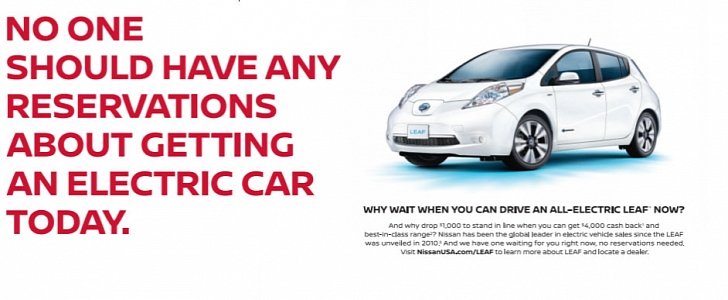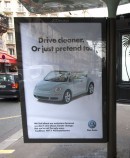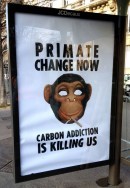There's a debate currently going on as to whether most traditional car manufacturers genuinely think they should start building EVs, or they only do it for complying with what the world is expecting of them.
The majority of the proof we've had so far points toward the latter. It's hard to imagine a multi-billion corporation would not be able to create a competitive electric car, while a startup from California with no background in the industry could.
Most people imagine the established brands don't convert to battery power because of the pressure exerted by the oil industry. Well, that might hold some water, but things are a little more complicated than that. This is a big change, and large companies don't react very well to that.
Let's put it this way: Mercedes-Benz could build an electric vehicle that's just as good as a Tesla, has better interior finish and is probably cheaper in no more than three years. In a few more years, it could even convert its entire range. But Mercedes-Benz sells close to two million cars worldwide every year - do you really think the market is ready to receive such a huge number of EVs in such a short time? No.
Building EVs would also mean terrific changes down the supply chain as well, not to mention a severe restructuring of the company's workforce. That's not something you do over just three years unless you want to sabotage the company. If you think Daimler's EV pledge with the new sub-brand means we'll see significant change by 2020, you're overly optimistic. The birth of the EQ range does mean something, but it's only the start.
If these brands would really want to sell more EVs, they would advertise them, right? And they would do that all across the U.S. in an even manner, because everybody drivers cars and everybody has access to electricity.
Well, a recent study commissioned by the Sierra Club and the Northeast States for Coordinated Air Use Management reveals a very telling (if unsurprising) pattern in the way automakers spend their money on advertising.
The data shows that battery-powered versions of the same model receive far less air time than their gasoline or diesel counterparts. For example, the Ford Focus Electric got just over 200 instances on a national level, while the models using fossil fuel powertrains received around 4,750.
However, the pattern suffers a few alterations when looking at the states with zero emissions mandates. Here, the electric models get all the attention, as exemplified by the Volkswagen e-Golf with around 200 instances in California and 400 in the Northeaster states. The regular Golf, on the other hand, was virtually absent in California with close to zero instances, but registered 2,300 nationwide.
The only conclusion that you can draw from here is that at this point, EVs serve a very clear point for these manufacturers, and that's to build image and earn the ZEV credit. They don't invest in advertising because they know very well that it wouldn't help. The only way to convince people to buy more EVs is to make decent ones, and they're just not doing that right now.
Most people imagine the established brands don't convert to battery power because of the pressure exerted by the oil industry. Well, that might hold some water, but things are a little more complicated than that. This is a big change, and large companies don't react very well to that.
Let's put it this way: Mercedes-Benz could build an electric vehicle that's just as good as a Tesla, has better interior finish and is probably cheaper in no more than three years. In a few more years, it could even convert its entire range. But Mercedes-Benz sells close to two million cars worldwide every year - do you really think the market is ready to receive such a huge number of EVs in such a short time? No.
Building EVs would also mean terrific changes down the supply chain as well, not to mention a severe restructuring of the company's workforce. That's not something you do over just three years unless you want to sabotage the company. If you think Daimler's EV pledge with the new sub-brand means we'll see significant change by 2020, you're overly optimistic. The birth of the EQ range does mean something, but it's only the start.
If these brands would really want to sell more EVs, they would advertise them, right? And they would do that all across the U.S. in an even manner, because everybody drivers cars and everybody has access to electricity.
Well, a recent study commissioned by the Sierra Club and the Northeast States for Coordinated Air Use Management reveals a very telling (if unsurprising) pattern in the way automakers spend their money on advertising.
The data shows that battery-powered versions of the same model receive far less air time than their gasoline or diesel counterparts. For example, the Ford Focus Electric got just over 200 instances on a national level, while the models using fossil fuel powertrains received around 4,750.
However, the pattern suffers a few alterations when looking at the states with zero emissions mandates. Here, the electric models get all the attention, as exemplified by the Volkswagen e-Golf with around 200 instances in California and 400 in the Northeaster states. The regular Golf, on the other hand, was virtually absent in California with close to zero instances, but registered 2,300 nationwide.
The only conclusion that you can draw from here is that at this point, EVs serve a very clear point for these manufacturers, and that's to build image and earn the ZEV credit. They don't invest in advertising because they know very well that it wouldn't help. The only way to convince people to buy more EVs is to make decent ones, and they're just not doing that right now.











